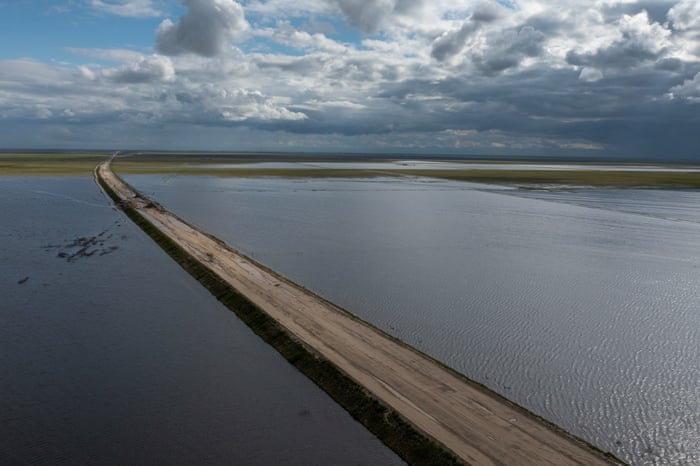In an unexpected turn of events, some of California’s largest lakes are witnessing remarkable revivals as the state’s “great thaw” of snowpack dramatically transforms the landscape. However, these transformations are not without their complications, revealing the intricate and varying impacts of this natural phenomenon.
Owens Lake: A Resurgence with Risks
Owens Lake, which vanished in the 1920s after its tributaries were rerouted to satiate Los Angeles’ water needs, has made a surprising comeback. This resurgence of water on the previously parched lake bed poses a threat to the infrastructure built to suppress dust, an issue that arose when the lake was drained decades ago.
The revival of this salt lake could potentially exacerbate air pollution and hinder a longstanding project by the Los Angeles Department of Water and Power, which has already invested billions of dollars.
Mono Lake: A Welcome Rebound
Conversely, Mono Lake, which has suffered from three years of drought, is predicted to rise by several feet. This is a much-needed relief for the lake, which has been struggling to reach its target levels.
The Great Thaw: A Double-Edged Sword
The stark contrast between the two lakes, situated about 115 miles apart, illustrates the complex and diverse effects of the “great thaw,” as meteorologists have dubbed the process. While some regions are reaping the benefits of the water from this winter’s record-breaking snowfall, others are grappling with managing the flows, which are anticipated to reach their peak soon across the state.
The Unpredictability of Nature
These impacts serve as a stark reminder that in California’s heavily manipulated landscape, where the climate alternates between excessive wet and dry periods, nature has an abundance of ways to thwart human attempts to regulate water or manage the repercussions of its removal.
Preparing for the Next Drought
Holly Alpert, the acting water director for Inyo County, where Owens Lake is situated, expressed her concerns about the future. Despite the current abundance of water, she is already preparing for the next drought, as climate change intensifies California’s cycle of prosperity and scarcity.
A Century-Old Water Conflict
The water conflict in Owens Valley dates back to the early 1900s when Los Angeles representatives quietly acquired land and water rights in the area. By 1913, the Los Angeles Aqueduct was completed, diverting a significant portion of the valley’s water over 230 miles to the burgeoning city. This sparked violent “water wars” between Owens Valley residents and city interests, which inspired the 1974 film “Chinatown.”
The Dust Problem
The dried Owens Lake became the largest source of dust in the United States, a pollution issue that affected the health of nearby residents and compelled Los Angeles to control pollution after legal agreements. The Los Angeles Department of Water and Power has spent about $2.5 billion to control dust, achieving a 99.4% reduction.
The Future of Owens Lake
With the recent heavy snow and rainfall, the efforts to control dust are now at risk. The department is preparing for the lake to refill and expects to spend between $20 and $40 million to strengthen and safeguard infrastructure. However, damage to dust infrastructure is anticipated as salty water encroaches on dust-controlling vegetation.
Mono Lake: A Protected Salt Lake
A short drive north lies Mono Lake, the most protected salt lake in the American West, where this season’s heavy flows could expedite its restoration.
In conclusion, the revival of these two California lakes presents a complex narrative of environmental change, highlighting the unpredictable nature of water management and the diverse impacts of climate phenomena.













